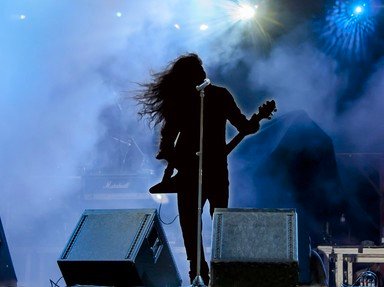Quiz Answer Key and Fun Facts
1. Although Ozzy Osbourne and Ronnie James Dio are the best known vocalists for Black Sabbath, the band have had several frontmen. Which ex Deep Purple member did the vocals on their 1986 album, "Seventh Star"?
2. Justin Hayward has been lead vocalist for The Moody Blues since 1966, but who was the band's original lead vocalist on their 1965 debut album?
3. Ian Gillan will always be seen by most as the classic Deep Purple vocalist, but when he was fired from the band in 1989, who took on the unenviable task of replacing him?
4. David Clayton-Thomas is the vocalist that most people associate with Blood, Sweat and Tears, but which multi talented musician provided vocals for their debut album, "Child Is Father to the Man" (1968)?
5. Who went from being a fan and fronting a tribute act to Judas Priest to their actual vocalist when he replaced Rob Halford in the band in 1996?
6. There seem to be two schools of thought when it comes to Genesis vocalists with fans planted firmly in the court of either Peter Gabriel or Phil Collins. Largely forgotten though is which vocalist who replaced Collins in 1997?
7. Vince Neil is an integral part of the Motley Crue story but between 1992 and 1996, he wasn't with the band. Instead, which man was Crue vocalist?
8. Paul Di'Anno was replaced by Bruce Dickinson in 1981, but who replaced Dickinson as Iron Maiden vocalist in 1994?
9. For their "Time" album in 1995, Bekka Bramlett joined which band, replacing which departed vocalist?
10. Van Halen had a flamboyant frontman in David Lee Roth, who was replaced by Sammy Hagar, who was quickly accepted by fans. When Hagar left the band in 1996, who was his replacement?
Source: Author
480154st
This quiz was reviewed by FunTrivia editor
agony before going online.
Any errors found in FunTrivia content are routinely corrected through our feedback system.
